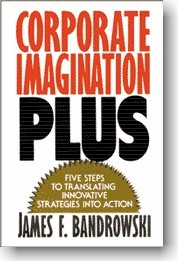Writer and journalist, Malcolm Gladwell familiarized the public with the terms “the tipping point,” and “blink.” With the release of his newest book this week he is about to popularize a less-than-common word: “outlier.”
In Outlier: The Story of Success, Gladwell describes an outlier as “the person who doesn’t fit into our normal understanding of achievement.” In essence, he says that outliers out-work the rest of us, and spend 10,000 hours doing it—what he calls the 10,000-hour rule—because greatness requires enormous time. His examples include Bill Gates, the Beatles and many others who worked enormously hard and put in the time before making it to the big time.
In Lean Six Sigma, one of the approaches that I utilize as a consultant to help organizations around the world achieve breakthrough financial results, an “outlier” is a data point that is beyond the three-sigma lines on a statistical process control (SPC) graph. W. Edwards Deming, Walter Shewhart, and their colleagues brought SPC graphs and outliers to the world in the 1940s. And, In the 1950s they brought them to the Japanese, who in turn used Deming’s philosophy, methods, and SPC graphs to kick our industrial butts in the 1960s. And they still do today.
Technically, an outlier is data point with a 99.7% chance of not happening. So if one happens, you can say with huge confidence, “something has changed.” You should do a root cause analysis on all outliers, good and bad. For example, if you rack up a horrendous golf score compared to your handicap, or previous average and range, ask yourself what the root cause is so you can correct it. Do the same for an amazing score. Rather than just buying everyone in your foursome a drink when you have an “exceptional” day, make the exception the rule by analyzing what worked. This is called a best practice.
I completely agree with Malcolm Gladwell’s assessment of the distinguishing characteristic of greatness. But if I may be so bold, I’d like to add an underlying characteristic. AMPLITUDE. On one extreme, great performers go to the positive extreme, where they think big and idealistically, and push themselves and their organizations to achieve uncompromising quality. Additionally, winners in all walks of life employ huge, constructively negative amplitude in order to spot unmet market needs, as well as brutally evaluate themselves. This enables them to be overachievers in practicing their art, science or sport, and fuels them. Wayne Gretzky, Jerry Rice, Dianna Ross, Madonna, Bill Gates, Steve Jobs, Jack Welch, and every other winner does this. They are often accused of being perfectionists, and for good reason. They are.
Coincidentally, I believe I fit Malcolm’s 10,000-hour rule in that I have presented what I have discovered to be the ONE THING that distinguishes great leaders (and all other winners) from just the good ones. It’s “Amplitude,” and I intend to make the word famous. (Remember where you heard it first!) I have shared it in keynote speeches and workshops around the world with 10,000 people over the last 15 years, receiving 99.9% confirmation it’s the real deal.
Or, if you would like to see how to apply amplitude to your business strategy, innovation, marketing, finance, operations, organization, acquisitions, and other areas, read my first book, Corporate Imagination—Plus. It was the first book to detail how to put innovation into strategy.

